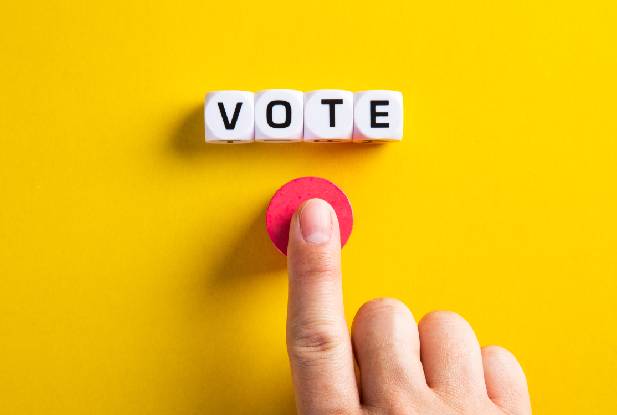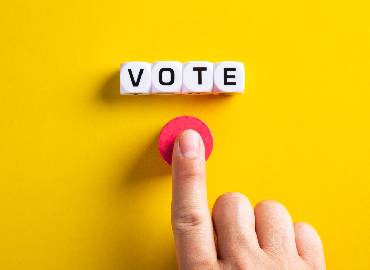
Elections in India are a global event, given India’s rise as a superpower. Political parties and leaders have swiftly moved towards branding, especially on social media platforms, after realizing the power it holds. And why not?
As data packs became cheaper and the internet became accessible in tier 2, tier 3, and remote areas, India has embraced the internet and the digital world with open arms. You will be surprised to know that as of 2022, India had the highest number of Facebook users worldwide. In fact, as of July 2023, Facebook (55.46%) leads the list of social media market share in India, closely followed by Instagram, YouTube, and Twitter.
Let’s be honest; with so many Indians on the internet, the digital marketing world has become the shortcut to reaching Indian households and influencing Indians—a trick rightly leveraged by Indian politicians. Think about it? India’s politicians today are more active than ever on their social media, sharing every little update, their two bits of information on global events, and commenting on controversies as well. There must be a reason behind it, isn’t it?
The reason is branding, more specifically personal branding, to influence the nations, ultimately influencing the citizen’s voter behaviors during the election. Wondering how and why? Let’s dig deeper!
Indian Political Party Ad Spend
It is not a surprise that ad revenue in India is expected to surpass 2023’s Rs 1 trillion milestone in 2024, reaching a whopping milestone of Rs 1.22 lakh crore. A part of this surge in ad spending is due to the upcoming national elections.
At the onset of 2024, BJP, India’s ruling party, spent more than 300 billion Indian rupees on advertising with Google ads and Meta. This made it the leader in political advertising online. BJP was closely followed by (surprise!!!) a regional party from Andhra Pradesh called YSRCP (YSR Congress Party). In contrast, other major parties like the Indian National Congress were left far behind with their online advertising spending amounting to over a million rupees during the same period.
Again, not so surprisingly, the ruling party of Lok Sabha, BJP, seems to be leading the online election battle in this election as well.
BJP’s Election Strategy
“In the 2014 election, the ruling party engaged in a vigorous social media battle. Subsequently, their approach evolved to prioritize inclusivity. Now, in their third campaign, they’ve adopted a FOMO Marketing strategy, where the fear of missing out drives participation in major events,” says Anup Sharma. He is an independent communications consultant who is presently working closely with major senior leaders to shape their messaging and outreach strategy.
Go back and think of important global events that have happened recently in India—The Ram Mandir, the G20 summit, the Lakshadweep tourism, and the Chandrayaan launch. And who is the first person to come to your mind? Our Hon’ble Prime Minister, Mr. Narendra Modi, and the BJP?

If yes, the party has done its job just right! Using events like the Ram Mandir celebrations and the G20 summit in its campaign for the 2024 Lok Sabha elections shows how well-planned BJP’s marketing strategy is. It means they don’t have to rush or make last-minute efforts because they’ve planned everything thoroughly in advance.
Does not it make you question: Why Lakshadweep now? Well, if reports are to be believed, Lakshadweep was a stop on PM’s south 2-day itinerary to Tamil Nadu and Kerala ahead of Lok Sabha elections, where he announced the development of projects worth over Rs 1,150 crore while smartly highlighting all the other projects that have been completed in the last 10 years. There’s more to his trip than meets the eye. News reports mention that this trip was also his chance to woo the Muslim community in Lakshadweep and Kerala.

Here’s another food for thought: Why did you not receive any messages from the government in the last 10 years, but all of a sudden, there is a letter from the Prime Minister on your WhatsApp from Viksit Bharat Sampark? That’s just another way the ruling party is trying to reach out to you, appreciate your support, and reinforce their achievements in the past years so that they are etched in your mind.
Other Ideas
Mind you, the political parties are not just stopping at leveraging the personal brands of their leaders and showcasing their achievements; it is very well extending to influencer marketing and negative ad campaigns.
For instance, in the last Telangana elections, the BRS party had reportedly hired 250 influencers and celebrities to support their campaign with the hashtag #EtlundeTelanganaEtlaindiTelangana. These included names like actor Sreemukhi, singer Sravana Bhargavi, actor Hariteja, anchor Savithri, and Bigg Boss contestant Mehboob Sheik.

Similarly, the Rajasthan government, under Ashok Gehlot, had announced advertising sums between Rs 10,000 and Rs 5 lakh to social media influencers to promote government programs and schemes based on the category they met.
Conclusion
The bottom line is simple. India’s leading political parties are taking the digital road this Election 2024. They are leaving no stone unturned and leveraging everything they can — print ads, billboards, Whatsapp messaging, Meta ads, and even influencers, for that matter! Above all, leveraging the popularity, following, and reach their leaders have managed to create via social media while slyly trying to overpower the negative campaigns against them.


